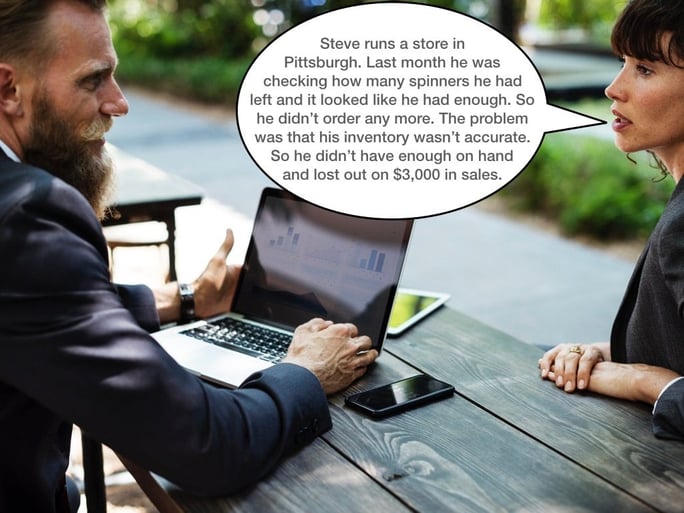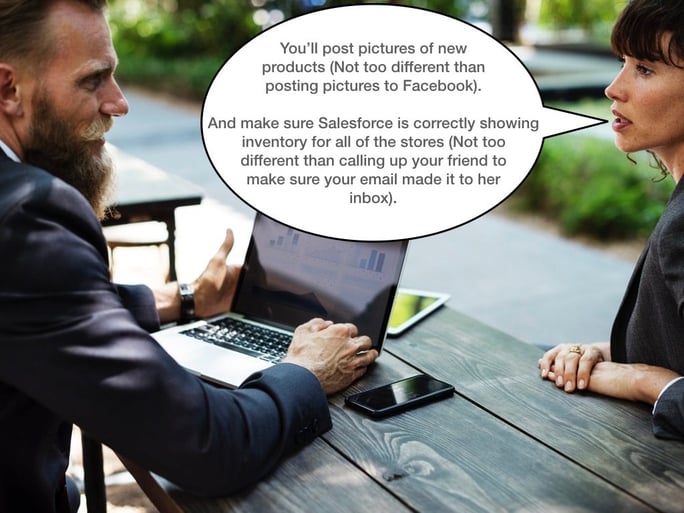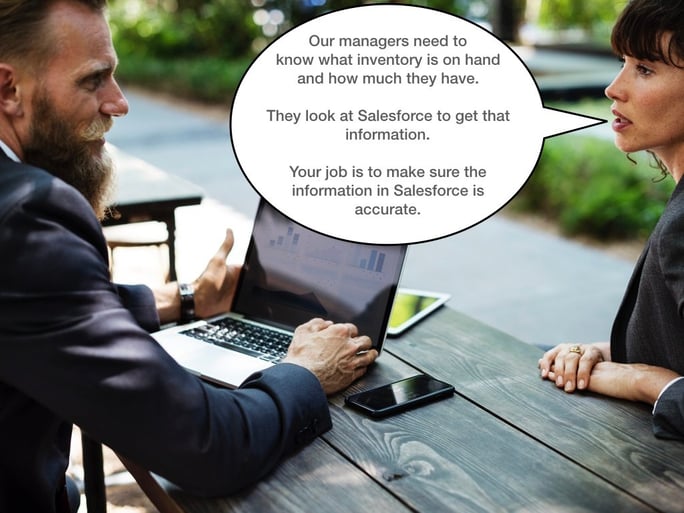Here's a typical explanation about what Salesforce is...
"Salesforce.com is a cloud computing and social enterprise software-as-a-service (SaaS) provider based in San Francisco." (TechTarget's definition)

You might also hear something like this...
"It’s an extremely flexible and scalable CRM system that is delivered via the cloud." (Tidewater's definition)

Nothing is wrong with those descriptions if you are talking to somebody who understands the lingo and the context.
But if that's how you explain it to your coworkers, don't expect any light bulbs to turn on.
The problem with those explanations is that they are meant to make you, the person explaining Salesforce, look smart. But explanations should focus on helping them, your coworkers who are learning about Salesforce, feel smart.
When you first train employees on Salesforce and explain what it is, skip the jargon. Forget all of the "interesting" details. And leave out the TLAs (three-letter acronyms).
Instead, package your explanation using guidance from Lee Lefever's book, The Art of Explanation:
- Start with agreement
- Follow that with some context (helps with "Why should I care?")
- Use a story to give an example
- Make the connection for your coworker
- Provide a few descriptions to explain "how"
- Bring it together with a conclusion and next steps
Here's what those steps might look like in your explanation.
Agreement
When you start explaining a new idea, concept, or tool, you want your listener to have confidence that he will understand.
If you begin with a concept that everyone can agree with, then it gives your listener confidence that "Hey! I think I can get this."
For example, let's say that you are explaining Salesforce to a new employee who will be using it for fidget spinner inventory management. You could start it off with something like...

Your listener would hopefully say, "I'd check my gas gauge to see how much gas was in the tank."
Perfect! You can both agree that if you wanted to see how much gas was left in the car, you would look at the gas gauge.
Context
Now that you have some common ground, you can put some context to what you are saying.

I know what you're going to say because it's what everybody asks—why can't I just start off talking about inventory management?
Our brains love to connect new information with old information. If you can build off of existing knowledge (looking at the gas gauge to see how much gas is left), then it will be easier to explain something new (looking at Salesforce to see how much inventory is left).
Story
I'm amazed at how many people have read all of the Harry Potter books. That series is over 4,100 pages.
And several people I am friends with have read the entire series more than once!
The reason is because humans like stories, and Harry Potter is an interesting story.
In your explanation of Salesforce, go ahead and throw in a story that makes the overall idea more concrete.


Connection
Using analogies and examples help your listener's connect new information with existing knowledge.
In this example, we are making connections to what the overall job will be, and making connections to the tool that will be used (i.e. Salesforce).



*I know, Salesforce isn't really a website—but if my learner isn't familiar with the term "cloud platform" or "web app" then I don't want to confuse him. I'd rather use a less accurate term to achieve an initial understanding.
Descriptions
Now we dive in a little deeper with a description of how the listener will actually perform a task.
Before, we were trying to set the stage so our listener could see the big picture and understand the "why" (including consequences). Now, we'll lightly touch on "how" it's actually done.


You could go into more detail than what I've shown in the picture above. If you're not sure how to train users on the details, I recommend checking out this eBook.
Conclusion
Sum it all up with a brief description. This is a high-level explanation of what you just explained.

Why go through the trouble?
It comes down to confidence.
If Salesforce seems overwhelming to a user, she will not want to use it.
Feeling overwhelmed creates mental blocks. It causes people to not do certain things or postpone certain actions (e.g. taxes, weight loss, fixing the bathroom sink).
If a user feels confident she can use Salesforce, she will be more likely to jump in.
By following these 6 steps, you are explaining Salesforce in a way that gives a user confidence. You are using examples he is familiar with, concepts that are easy to understand, and actions that he can already do.
By following these 6 steps, you will lower the "cost" of learning something new. And that's definintely something worth investing in.

